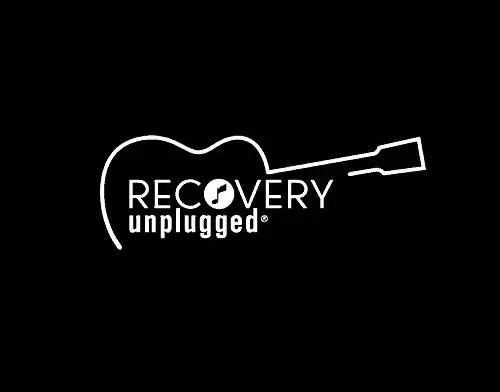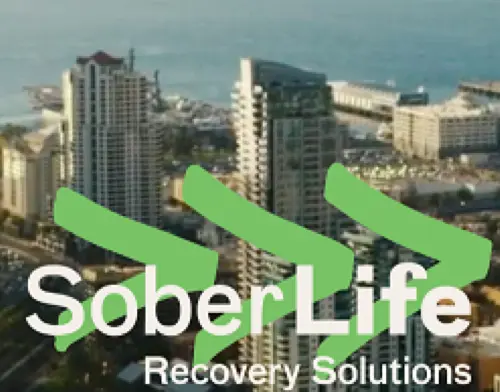As of 2022, 24% of Americans were taking psychiatric medications of some kind.1 These psychotropic drugs are used to treat mental health disorders.
Nearby Drug Rehab Centers
Loading visitor information…
What Are Psychotropic Drugs?
Treatment providers often combine these prescriptions with psychotherapies and other methods to address mental health issues. The right combination of treatment and medication can transform a person’s life. However, like all medications, potential side effects and risks are involved. This guide offers an overview of psychotropic drugs and their role in treating mental health disorders.
Psychotropic drugs affect thoughts, mood, and behavior. They work by regulating receptors and transmitters in the brain. Because mental health disorders can result from an imbalance of brain chemicals, these medications can provide relief by restoring a healthier chemical balance.2
Types of Psychotropic Drugs
This class of drugs includes five main categories of medications that are prescribed to treat a full range of mental health disorders.
Antidepressants
Antidepressants are the most commonly prescribed psychotropic medications. Antidepressants impact the brain’s serotonin, norepinephrine, and dopamine levels, which regulate emotion. Increasing these levels can combat the symptoms of depression. Types of antidepressants include selective serotonin reuptake inhibitors (SSRIs), serotonin-norepinephrine reuptake inhibitors (SNRIs), and tricyclics.3 Commonly prescribed antidepressants include Prozac, Zoloft, Effexor, and Pamelor.
Antipsychotics
Antipsychotics, also known as neuroleptics, are used to address symptoms of psychosis, such as delusions and hallucinations. They come in two forms: antipsychotic medications and atypical antipsychotics. Atypical antipsychotics are more commonly used because they have fewer side effects and have proven effective, especially in treating schizophrenia.4 Clozapine, Risperidone, and Olanzapine are some commonly prescribed antipsychotics.
Anti-Anxiety Drugs
Anti-anxiety medications include anxiolytics, sedatives, and hypnotics. These medications limit the physical and emotional effects of anxiety disorders by making the person feel calmer and more relaxed. Benzodiazepines (benzos) are the most well-known anti-anxiety medications.5 Commonly prescribed benzos include Xanax, Ativan, and Valium.
Mood Stabilizers
Mood stabilizers work by reducing “abnormal” activity in the brain. These drugs are usually used to treat mental health conditions that involve radical mood swings, such as bipolar disorder.6 Mood stabilizers include quetiapine, lithium, and valproic acid.
Stimulants
Stimulants increase the activity of the central nervous system and can be used to treat attention deficit hyperactivity disorder (ADHD), narcolepsy, and other conditions.7 Commonly prescribed stimulants include Adderall, Ritalin, and Dexedrine.
Uses for Psychotropic Drugs
Medical professionals may prescribe psychotropic drugs to address the following mental health disorders:
- Depression
- Anxiety
- Bipolar disorder
- PTSD
- Schizophrenia
- ADHD (attention deficit hyperactivity disorder)
- Insomnia
- SAD (seasonal affective disorder)
Psychotropics are often combined with psychotherapy to treat these disorders. The medication can lessen symptoms, so the person has a more stable mindset to address underlying issues of their mental health condition. Combined treatment may involve therapy, life skills development, and holistic treatments.
Side Effects of Psychotropic Drugs
As with any medication, there are risk factors involved with the use of psychotropic drugs.
Possible side effects for each type of psychotropic include:
- Antidepressants: Weight gain, fatigue, drowsiness, and loss of sexual function
- Antipsychotics: Dry mouth, digestive issues, nausea, and blurred vision.
- Anti-anxiety drugs: Weight gain, dizziness, drowsiness, and nausea.
- Mood stabilizers: Diarrhea, vomiting, skin rash, and constipation
- Stimulants: Weight loss, insomnia, chest pain, and headaches.
Less common, serious side effects include:
- Suicidal thoughts
- Seizures
- Mania
- Allergic reaction
Risks of Psychotropic Drug Use
In addition to the potential side effects, use of psychotropic drugs can involve other health risks. These include:
Heightened Symptoms: Research has revealed that psychotropic drugs can cause an initial worsening of symptoms. To minimize this risk, medical providers recommend starting with a low initial dose and only increasing this dosage if necessary.8
Addiction: Many psychotropic drugs can be addictive. Benzodiazepines are among the biggest concerns regarding addiction. The FDA (U.S. Food and Drug Administration) updated its box warning in 2020 to reflect that benzodiazepine use can lead to misuse, drug abuse, and addiction even when taken at recommended dosages.9
Drug Interactions: Potentially dangerous drug interactions occur when a substance, such as another medication, food, or alcohol, interacts with psychotropic medications. The most severe interactions with psychotropics can result in profound sedation, central nervous system toxicity, increased risk of severe side effects, and a high heart rate that can lead to a heart attack.10
Overdose and Death: It is possible to overdose on psychotropic drugs. Not only can someone take more than prescribed, but the DEA (Drug Enforcement Administration) also warns of the dangers of fentanyl-laced drugs deceptively marked as legitimate prescription pills. Just a tiny amount of this lethal opioid can kill, and the psychotropics Xanax and Adderall are among the drugs commonly counterfeited.11
Reducing the Risks of Psychotropic Drugs
The primary way to minimize the risks associated with psychotropic drug use is to work closely with a medical professional and take the medication only as prescribed. Your doctor will be able to work with you to ensure that the drugs you are prescribed are as effective as possible while limiting the risk of side effects and withdrawal symptoms.
For some people, finding the right combination and dosage of psychotropic drugs can take time. But once you do, the effect on your condition and your life can be dramatic. Combined with other forms of mental health treatment, psychotropics can help you on your journey toward mental health recovery.
Addiction Centers That Treat Drug Addiction
| Name / Address / Rating | Description | Treatments / Payments / Programs | Review / Contact | Images | |
|---|---|---|---|---|---|
Avenues Recovery Center at Lake ArielAd This is an ad and Avenues Recovery Center at Lake Ariel is a paid advertiser. Paid advertisers may be listed first in search results. This ad may contain content provided by the advertiser. Rehab.com does not verify ad content or any reviews that are displayed. Learn More 50 Industrial Park Way
Lake Ariel, PA 18436
| Avenues Recovery Center at Lake Ariel is a 40 – bed residential facility offering drug and alcohol detox and inpatient rehabilitation services. Nestled on 5.19 acres of the beautiful Poconos mountains, this homey yet modern establishment provides the ideal setting for clients to cleanse themselves of all harmful substances and embark on their jou | Treatments Programs Payment Options | View Website (570) 354-6060 | When I got to Avenues I was broken. The counselors and the staff was great especially Tyler, thank you for all that you do.
Misha Lopato
2 months ago
This facility us amazing. Shout out to Bria Lydia Dave kamisha Ryan makayla Joey Joe Cassie and all the rest. The only complaint is that the facility is not accessible for the handicapped.
Mlynda Schmitt
2 months ago
10/10 recommend Avenues. An amazing community with great staff that care about your growth. You won’t be disappointed!
Rashawn Reed
3 months ago
| 
5 5 



|
255 Wilson Pike Cir
Brentwood, TN 37027
| Recovery Unplugged Nashville Drug & Alcohol Rehab is a private luxury addiction treatment center located just south of Nashville, in Brentwood, Tennessee. They offer several levels of care, including medication assisted treatment (MAT), residential treatment and behavioral telehealth. Adults with dual diagnoses and substance use disorders are welco | Treatments Programs Payment Options | This place changed my life. I’m clean for the first time since being a teenager thanks to them. The tools they give you, as well as how well you are treated here and how great the staff (also in recovery) is, makes this place perfect. I know I wouldn’t have had this experience anywhere else, and this place still plays a part in my sobriety to this day! The techs and nurses are great people, and the alumni team is nothing short of amazing! They will keep up with you and check on you even after you leave. They will continue to invite you places and show you that you have built a real community with them. There is no better rehabilitation than this place. Once you are finished with your stay, they will offer you virtual IOP through Recovery Unplugged. TAKE IT! This is a virtual program that continues to help you and hold you accountable. The group meetings are awesome and they have great hosts! Thanks RU!!
Steven Myers
4 months ago
I had a great exper Here at recovery unplugged and I recommend to any one in need to get a bed weather it’s for detox or residential. They have a php program and will help with an after care plan. The food is amazing and the staff are all great
Leeo Chitty
4 months ago
Recovery Unplugged truly felt like my home away from home. I went through both residential and PHP, and I can honestly say I’d highly recommend this program over any other in Tennessee. From day one, I felt so welcomed by the techs and the alumni community—it made a world of difference in my recovery. The beds were super comfortable, the food was amazing, and best of all, I was allowed to bring my pup, which made the whole experience so much easier and more comforting. I’ll always be grateful for the love and support I found here.
Joanna
4 months ago
| 
5 5 



| |
901 Clint Moore Rd
STE A
Boca Raton, FL 33487
| Boca Recovery Center is a comprehensive drug and alcohol treatment center in Boca Raton, Florida. Their Boca Raton location is actually their administrative office so they don’t administer treatment here directly but this is the place you call as a starting point for your recovery. They’ll help you figure out which of their programs is the best | Treatments Programs Payment Options | This place is god sent. I have been in several trauma centers in Florida and they are the only ones that seem to get it! Great snacks, fashionable donations (including shoes), and even better Techs.
Ive been clean since the holidays due to their new beginnings of sobriety excitement and impressive alumni support system +Nikki. Thanks, Boca 😀.
Beach Beauty
3 months ago
Boca is an amazing place. The staff is absolutely amazing. I was fortunate enough to be able to work with Misty and Sondra. From day 1 until the day I left was a complete 180. Misty helped set me up for my next steps, and truly cares and checked in on me to make sure it was the right fit. She got to know understood me as a person and truly knew the right next steps for me to be set up for success. Highly recommend Boca.
Aria Kamyab
9 months ago
I absolutely love this place!!! So much help and healing!!! Great staff!! 10-10 recommendations.
Nicholas Reece
1 year ago
| 
12 12 



| |
1400 Veterans Highway
Levittown, PA 19056
| The Steps To Recovery addiction treatment center is situated in Levittown, Pennsylvania. At this drug rehab center, patients can expect to engage in a unique treatment approach that focuses on helping individuals recover through authenticity, intimacy, community connection, and transparency. Steps to Recovery offers a serene and private environ | Treatments Programs Payment Options | Great place, very nice. Staff were friendly and the techs are even better. Kim was so respectful and relatable to the clients. She made everyone feel welcome and treated us like her peers. Highly recommend this place if you’re serious about getting sober.
unknown unknown
4 months ago
I have been to several treatment facilities and this one is by far the best one i have been to. Not only is the facility clean and well kept, the faculty that works there have amazing hearts. This is the only treatment facility that i have been to where the staff actually genuinely care for you and your recovery/well being. They have a unique treatment plan that works. Unlike many places I have been to instead of boring you to death, they actually make recovery fun, which in my experience has a lot to do with being able to succeed in recovery. I have recommended multiple friends and family members to go here when they are struggling with addiction and will continue to recommend Steps to Recovery to anyone who asks how i got clean and remained clean. I owe my life and my recovery to these people and they will always have a special place in my heart.
Just a little update, celebrating 10 years clean in a few months
Keith Greisemer
7 months ago
I recently “graduated” from STR. I was in programming between May to September, originally PHP and then in the IOP mental health program. While in PHP I was in housing as well. There are family sessions offered too, but I did not utilize that service while at STR.
While the house I was at was not perfect, administration tried their best to accommodate every concern clients had with the house. It was overall a clean and safe environment to live in. If there are any concerns advocate for yourself and ask a tech to call a house meeting if it is an interpersonal issue within the house. If you have a different issue communicate that to the director and it will most likely be handled promptly.
The PHP (partial hospitalization program) for mental health is six days a week, 9am-1:30 Monday-Friday and 9am-12pm Saturdays. The program changes as needs change. When I first began there process groups were three hours long, but when I left they were two hours long with an additional hour of psych ed. While the day may seem long, everyone gets a break between noon and 12:30. Afternoon there are different types of therapy everyday like art therapy, DBT, CBT.
IOP (intensive outpatient program) is only 9am-12pm three days a week, usually Monday, Tuesday, and Thursday. The director is accommodating though so if for any reason you need to not go on a Monday, you could always go on a Saturday if you advocate for yourself.
You’ll have one individual session a week with one of the clinicians. I had Ashley and she is phenomenal. While the staff really do care about the clients, Ashley definitely cares about clients and it shows in her work.
You’ll also have a session with either Dr. Newman or Monique once a week to go over medications they are both amazing!
STR is shaped not just by the staff, but clientele too. I have reinforced and grew my support system while being at STR. And while I was in the mental health program, I have substance use disorder as well, I’d recommend Steps to recovery struggling with their mental health or substance use. It may take a couple of weeks to really settle into the program, but continue to do the work since you are worth it and advocate for yourself if something isn’t working for you.
STR is also a great facility if you’re part of the LGBTQ+ community. The staff here are not just accepting, but affirming. There is an optional LGBTQ+ group once a week with Christian, which was my favorite part of the week.
Sal DiPasquale
11 months ago
| 
6 6 



| |
Avenues Recovery Center at ClarksvilleAd This is an ad and Avenues Recovery Center at Clarksville is a paid advertiser. Paid advertisers may be listed first in search results. This ad may contain content provided by the advertiser. Rehab.com does not verify ad content or any reviews that are displayed. Learn More 4601 Medical Plaza Way
Clarksville, IN 47129
| Avenues Recovery Center at Clarksville is a residential facility which offers drug and alcohol detox and inpatient rehabilitation services. Set on a sprawling 10-acre property and housed in beautiful, state-of-the-art premises, this modern yet warm establishment provides the perfect backdrop for clients to cleanse themselves of all substances and b | Treatments Programs Payment Options | View Website (930) 203-1947 | The clinicals were great smaller groups and the teachers have real life experience! Staff makes the place. Great food and you can vape!
Zach Rumell
2 months ago
Great program and facility. The staff goes above and beyond!
Savannah Tessmer
2 months ago
1st Time client, in which I’ll be graduating this week and I’m going to a 6 month program at avenues complete in Philly. I’ve had a tremendous experience here in Clarksville Indiana God bless everyone.
Michael Arnett
2 months ago
| 
4 


|
262 Gaffey Rd
Watsonville, CA 95076
| Located in Watsonville, California, Elevate Addiction Services provides alcohol and drug rehab services to men and women suffering from addiction. Their levels of care include detox, inpatient treatment, and outpatient treatment. Located in Watsonville, California, Elevate Addiction Services provides alcohol and drug rehab services to men and women | Treatments Programs Payment Options | This place has gotten me back on my feet and ready to take on life without the need of alcohol and drugs. Thank you Elevate!
Leo Guerra
2 months ago
helped me through the hardest point of my life, would recommend to anyone who’s wanting to change their life and best their addiction/s.
Ashton Adams
3 months ago
My wife, Nancy and I could not be happier with the people and program at ERS. There’s no doubt in my mind that the welfare and success of each client is at the forefront of everything they do. Our 21 year old grandson entered the Watsonville center lost ,angry ,hurt with no direction relying on drugs and alcohol to ease his pain. ERS provided him with the tools and support he needed to lift himself out of this destructive path and give hope to a new beginning living in sobriety. He has grown so much over the past few months and takes with him so many life skills both new and rediscovered. I see confidence again and a self love that had been buried for a long time.
The program is progress based and not rushed giving him time to truly work on his issues that are unique to him and his sobriety. The staff there truly care and are able to understand and mentor since many have been through the program themselves…they get it.
The communication with the Family Support staff was very, very good. Caitlin was so helpful and informative and able to ease our anxieties along the way. We were kept informed regularly of his progress and his struggles and hear how we might best support him.
As our grandson had pending legal problems as many newly in recovery do and ERS was even able to support this aspect of recovery by providing transportation to his court ordered appearances, helping him with his goal to be a responsible adult….many thanks to Arthur for all his support in this area. We are so very grateful and highly recommend Elevate Recovery Services !
Richard and Nancy
nanrick10
3 months ago
| 
5 5 



| |
446 Main Street
Plymouth, NH 03264
| Plymouth House is a drug and alcohol addiction recovery center in Plymouth, New Hampshire. The Plymouth House is a retreat that serves adult clients with a process rooted in health in the 12 step program utilized by Alcoholics Anonymous. They are a private facility with residential amenities. Plymouth House sits on 60 private acres near the Whi | Treatments Programs Payment Options | I arrived at Plymouth House in March 2025. I didn’t know what to expect. The staff are amazing, the food is great, and best of all you work on yourself. They are supportive through your whole stay
and your team guides you there the process. I also had an aftercare person who helped me transition to a IOP and sober house to embark on my journey for long term sobriety. Plymouth house is a great
Place to start and they are always there to help.
Charles Cornell
3 months ago
This facility is outstanding. The staff truly care about your wellbeing and want what is best for you. The Plymouth House saved my life. I was terrified to walk through the doors for the second time after trying to do things my way, but I was welcomed back with open arms. This place no doubt has become a home to me. I am beyond grateful for The Plymouth House and highly recommend to all.
Jillian Juris
8 months ago
Great staff, amazing facility and great program. Stayed 50 days and didn’t want to leave. Foods great, community is awesome, very thorough and great 12 step program. Would definitely recommend
Mike Ytn
10 months ago
| 
5 5 



| |
900 Hendersonville Road
Suite 203
Asheville, NC 28803
| Next Step Recovery is a nonprofit organization that offers sober living programs for adult males recovering from substance abuse. They offer a safe, structured and supportive environment that builds on traditional treatment and 12-step programs. Next Step Recovery is located in Asheville, North Carolina. Next Step Recovery’s mission is to pro | Treatments Programs Payment Options | Susan and Terry and Charles are outstanding as well as the rest of the staff
I’ve been here 3 weeks with no complaints
All my needs have been addressed once more very wonderful program.
Mark Evans
2 months ago
Love this place… very nice and wonderful staff..been here three weeks and feel like a new person…housing is very comfortable and very very clean..plenty to do all day… I HIGHLY RECOMMEND THIS PLACE…. JEFF
Jeffrey Beckwith
2 months ago
Our family has been very grateful for the kindness, compassion, patience, & professionalism shown to our loved one throughout the entire process. The staff has been amazing in answering our questions, addressing concerns, & most importantly helping our family member. They repeatedly go above & beyond to help and really care about the people they are working with. While there are no guarantees, we believe the numerous skills learned during our family member’s stay will serve well in the future to help them continue to pursue and stay on a more positive life path. I would highly recommend Next Step to anyone.
Kim Mitchell
6 months ago
| 
5 5 



| |
Boca Recovery Center – New Jersey Drug & Alcohol RehabAd This is an ad and Boca Recovery Center – New Jersey Drug & Alcohol Rehab is a paid advertiser. Paid advertisers may be listed first in search results. This ad may contain content provided by the advertiser. Rehab.com does not verify ad content or any reviews that are displayed. Learn More 30 W Jimmie Leeds Rd
Galloway, NJ 08205
| Boca Recovery Center – Galloway is a drug and alcohol rehab in Galloway, NJ. They provide inpatient addiction treatment and medical detox. Boca Recovery Center – Galloway is a drug and alcohol rehab in Galloway, NJ. They provide inpatient addiction treatment and medical detox. Boca Recovery Center in Galloway, New Jersey is a luxury recovery | Treatments Programs Payment Options | View Website (609) 270-3068 | Great place to start your first step to sobriety. The entire staff was very helpful, I am glad, I chose to be at BOCA facility at New Jersey Galloway. Wonderful people and great experience.
parul parmar
2 months ago
This is by far the best rehab center in New Jersey! All the staff are wonderful and very helpful! I strongly recommend using BOCA for your recovery!
Nicholas Biddinger
3 months ago
This is the top drug and alcohol detox I have experienced. Staff is very helpful and patient. I highly recommend this place to anyone struggling.
Gavin Blueberry
3 months ago
| 
7 7 



|
141 E Main Street
Huntington, NY 11743
| This facility offers outpatient addiction treatment, recovery coaching, and medication-assisted treatment for adults. Through an intensive outpatient program or an outpatient program, participants engage in individual and group therapy that helps get to the root of addiction and relapse prevention skills. Outpatient support groups allow you to coll | Treatments Programs Payment Options | As a clinical social worker running a local group practice, I regularly collaborate and refer clients to Mountainside Treatment Center. Their staff has always been exceptional, especially Courtney Hulse and Dan Sexton, who go above and beyond in tailoring their treatment plans for each client and family. Mountainside serves as a tremendous resource, providing quality substance abuse treatment that is critically needed here on Long Island. We are enthusiastic about continuing to work with Mountainside to best serve our community and families. Thank you for all you do Mountainside. Highly recommend!
Gordon Gooding
1 year ago
My experience with Mountainside has been nothing but positive. Jessica Leone has been key in my recovery. She consistently has a positive attitude, provides great insights and experiences. Jessica listens well and challenges me. She is open whenever needed and feels like one of my biggest supporters. I appreciate all that she does.
Heather Stratford
1 year ago
Where do I even begin? Steve Dixon and Julia Purcaro have single handedly saved my life. Hands down. Being 18 years old and already in recovery, they have given me every possible skill to succeed in life and have set me up for pure success. Couldn’t be more grateful, and fortunate to have them by my side. Mountainside is amazing!
Liam Bowles
3 years ago
| 
4 


| |
800 Kings Hwy N
Suite 100
Cherry Hill, NJ 08034
| Legacy Healing Center Cherry Hill is a Joint Commission accredited luxury outpatient rehab in Cherry Hill, New Jersey. They welcome adult men and women seeking a comfortable space for addiction and co occurring disorder recovery. You’ll benefit from comprehensive care to hone in on recovery and gain a new outlook on life. Their programs offer | Treatments Programs Payment Options | The staff was really top notch. They honestly care about the client. The case workers were on top of any issues I had. The groups were informative and well balanced. Melissa, the first smiling face you meet is phenomenal. She was knowledgeable and easy to approach with any questions, not just the intake process. I feel that Legacy Healing gives you the best chance to stay sober, not just during your time there, but afterwards as well.
Toby Cass
2 months ago
The legacy is a great experience for me I’m so glad I came here for detox.
Craig Hamilton
2 months ago
So for my experience at legacy had been an amazing journey and all staff members have been very helpful as well as case managers and therapists they go above and beyond to make you feel welcomed and and excepted melissa at the front desk is the bomb as well as Brian whom is a supervisor who has helped me extremely through my journey Jack the house manager does a tremendous job and Mark most definitely has the best groups even when ur having a bad day you will laugh your butt off the entire time during his group and misty she is outstanding inspiration and brings great energy to the rooms love love my journey here and couldn’t have picked a better place thank u all and God bless
Lyle Hottle
2 months ago
| 
6 6 



| |
1066 East Avenue J
Lancaster, CA 93535
| Design for Change is a drug rehab facility located in Lancaster, California. The center offers treatment for substance use disorder, alcohol use disorder, opioid use, chemical dependencies, and co-occurring mental and behavioral health disorders. Design for Change provides detox, medicated-assisted treatment (MAT), residential inpatient treatment, | Treatments Programs Payment Options | I had never been to rehab, so I didn’t know what to expect. But this place blew me away!! The staff are all very nice, and truly care about each and every person in the program. The house is beautiful. The food is delicious.. I actually gained about 10 lbs in 5 days. Lol. I can’t say enough great things about this place.
american soldier
3 months ago
Great staff and excellent program. Definitely recommend.
Nelson Paniagua
3 months ago
Excellent facility, excellent counselors, excellent staff. Stay at DFC is my best experience in my life. The knowledge, treatment and care I received here changed my life. DFC gave me a new start of my life. Nothing to say but appreciation. Thank you! DFC
Tiffany Zhang
3 months ago
| 
6 6 



| |
Rolling Hills Recovery Center New Jersey Drug & Alcohol RehabAd This is an ad and Rolling Hills Recovery Center New Jersey Drug & Alcohol Rehab is a paid advertiser. Paid advertisers may be listed first in search results. This ad may contain content provided by the advertiser. Rehab.com does not verify ad content or any reviews that are displayed. Learn More 425 Main St
Chester, NJ 07930
| Rolling Hills Recovery Center is a state licensed outpatient drug and alcohol rehab facility in Chester, New Jersey. Providing a continuum of treatment from partial hospitalization care to intensive outpatient programs, their interdisciplinary team looks at addiction from all angles. This includes the whole person, the community around that person, | Treatments Programs Payment Options | View Website (973) 606-9170 | This program is amazing! It’s hard to explain the impact they’ve had on my life and my family’s life. I really feel like me again. I need to say Caroline and Jose were so helpful. They always made me feel better. If anyone who reads this needs help just call here and go for it. Thanks you guys so much.
Ronald lightman
2 months ago
Rolling Hills is a place that helps you heal. It’s not just a paycheck to these people. They are devoted to what they do because they have been where you are. It’s a place that gives you your life back. If there was ever a time and place to get better, it’s now.. and here.
James Faulkner
2 months ago
Rolling Hills has been a wonderful experience with my recovery! The staff have been so amazing so knowledgeable ! If you or someone you know who are struggling with addiction and highly recommend rolling Hills!
Victoria Clark
2 months ago
| 
11 11 



|
586 Glorene Ave
South Lake Tahoe, CA 96150
| Elevate Addiction Services is an inpatient detox program located in South Lake Tahoe, California with a holistic approach to treating alcohol and drug addiction. They’re part of a network of treatment centers across California. South Lake Tahoe’s idyllic backdrop with gorgeous pine trees and mountain vistas makes it an ideal retreat to prioriti | Treatments Programs Payment Options | This program completely changed my sister’s life. She is thriving now after years of mental health struggles and addiction. Couldn’t have asked for a better facility. She went to others and did not come out successful. She is still clean after a few years now and I couldn’t be more grateful to this program for helping bring my sister back
Chantelle Allen
3 months ago
Elevate, this facility in particular, makes recovery seem not just a possibility but a lifestyle that you WANT to live. All of the staff don’t care because it’s their job, they care because they see you as a person who is worth it. It’s truly a life changing experiencing and helps guide you with the tools to realize your fullest potential without substance. If you are struggling with addiction I would look no further than here to help you kick it out of your life and make way for a new and beautiful one.
Hannah Cunningham
3 months ago
Thanks to the program & staff at Elevate I was given a 2nd chance at life! I loved the program and the staff was amazing! It was comforting knowing that the staff members were also in recovery. Knowing that they knew what I was going through was very comforting! Everyone was so caring and compassionate. The food was GREAT too!!! The 3pm snacks were awesome! Always a Surprise! lolI thank the program & staff at Elevate for this 2nd Chance at Life! I feel AMAZING! and…. Here I AM!!!
Neva Barber
4 months ago
| 
5 5 



| |
3849 Chatwin Ave
Long Beach, CA 90808
| Gratitude Lodge is a drug rehab facility in Long Beach, California. The center offers treatment for substance use disorder, alcohol use disorder, opioid use disorder, and co-occurring mental and behavioral health disorders. Gratitude Lodge provides medication-assisted treatment (MAT), detox, inpatient treatment, intensive outpatient programs (IOPs) | Treatments Programs Payment Options | The review of this place lies within in its name! I am very grateful for this facility. The staff are friendly, professional, and efficient. They are very attentive and helpful to your needs. In addition, the environment is clean, orderly, and safe. I would definitely recommend this place to anyone. Thank you for all that you do to make this place wonderful experience!
Danielle Magpantay
3 months ago
I had such a great experience in such a hard time in my life. The staff was so supportive, friendly, and welcoming they knew exactly what I was going through and were so supportive. I would highly recommend Gratitude lodge to anyone who is struggling with substance abuse.
brandon fuentes
3 months ago
My name is Nik Everett, I had an amazing experience here, outstanding staff they are very open to suggestions. I learned a lot from this place and would highly suggest you go here, thank you Gratitude Lodge seriously!
we hit
6 months ago
| 
5 5 



| |
971 South Dixie Highway
Pompano Beach, FL 33060
| Boca Recovery Center in Pompano Beach, Florida is located just 10 miles north of Fort Lauderdale. We provide comprehensive rehabilitation services ranging from medical detoxification and residential treatment to specialized programs that meet your unique needs. Boca Recovery Center in Pompano Beach, Florida, is an addiction treatment facility for a | Treatments Programs Payment Options | So helpful! Especially Nikki, she’s the best!
Dana Merson
2 months ago
Great facility! Nikki was tha absolute best! And still is I’ve been to multiple treatment centers and Nikki is the only one who consistently checks up on me to make sure I’m ok! Would recommend any one who’s thinking about getting clean to start there journey here!
Troy Fauteux
3 months ago
When I decided to go into detox , I was ashamed and embarrassed for having gotten to the point of needing it, and intimidated by getting it. The minute I arrived at Boca Recovery Center, all of that went away. The entire staff, from Case Workers to Doctors, Nurses, Coordinators, Therapists, – everyone– was so professional, kind, friendly, caring , informative, supportive , and helpful. I was so comfortable and my condition improved everyday. It was one of my best decisions to go there and be guided by them to better health. I haven’t felt this strong and healthy in 5 years. I thank the people at Boca Recovery Center with all of my heart. Love and mercy to everyone.
Duane.
Duane Rollick
3 months ago
| 
9 9 



| |
Boca Recovery Center – Indiana Drug and Alcohol RehabAd This is an ad and Boca Recovery Center – Indiana Drug and Alcohol Rehab is a paid advertiser. Paid advertisers may be listed first in search results. This ad may contain content provided by the advertiser. Rehab.com does not verify ad content or any reviews that are displayed. Learn More 3040 W Park Dr
Huntington, IN 46750
| Boca Recovery Center is a luxury drug treatment facility with a location in beautiful Hunting, Indiana. The company started in Florida in 2016 and quickly moved into three additional locations to address substance disorders and co-occurring mental health issues. They accept most major insurances and will check your coverage options days before you | Treatments Programs Payment Options | View Website (260) 888-8006 | This is my first time seeking sobriety. As soon as I walked through the doors, I felt calm and welcomed. The staff are easy to approach and talk to. My peers are welcoming and my new family.
Jesse Bellinger
2 months ago
Boca is a very good experience staff is awesome and very helpful and know what you’re going through.
kyle boyd
2 months ago
Boca was really life changing for me.i learned a lot more here than just about my drug addiction my mental health physical health and more the staff are so motivated to get us better the groups are magical… better than 6 flags itself food is awesome therapist nurses staff and case management r amazing i came in here a sad had nothing going 22 year old 30 days later leaving happier than ever and i learned so much knowledge wisdom from the whole family here at Boca this place is truly a blessing 😭💯🥰🥰.I recommend this place to anyone it’s amazing I could really go on forever………once u go Boca addiction will be remembered but erased from ur life….go team Boca👌🤘
Samuel Pletka
2 months ago
| 
24 24 



|
3930 Fourth Ave
Suite 300A
San Diego, CA 92103
| Sober Life Recovery Solutions, located in San Diego, California, is an alcohol and drug rehab center that provides alcohol and drug rehab services to teens and adults through their partial hospitalization program, intensive outpatient program, and traditional outpatient program. They also support Veterans. Sober Life Recovery Solutions, located i | Treatments Programs Payment Options | SoberLife: Great program and especially, great, caring, professional staff! They helped me so much. Highly recommended.
Tim Kazwell
11 months ago
Highly recommend. For addiction and mental health. My journey through soberlife has been such a blessing. The staff are very caring, intuitive, relatable & intelligent. I learned so much & really think the curriculum is top tier. They take your recovery seriously, motivating you to do the same. Core memories made here, so sad to leave but thankful for the experience of a lifetime.I never imagined being a week sober, now I am almost 6 months. Make the choice to heal, you deserve it.
Katriel Goodson
1 year ago
Sober life is the absolute BEST place to be if you are struggling. I went in 2020 and didn’t complete, and they welcomed me back with open arms march of this year and I went through completion. I have had the opportunity to stay in their network by getting care at SD wellness for psychiatry. Over this holiday week I had forgotten about my refill of a medication I need, I got in contact with Dan from alumni since I forgot what their hours were for thanksgiving and Black Friday, and by today (saturday) I have my refill! I got a personal call from Dr Amaro and got squared away. I’ve never found a medical group that listens, cares, and has better communication than here. I am so happy with this process and will always come back if I need it! Highly recommend!
Gabbie Pearce DeRose
1 year ago
| 
2 

| |
811 Main Court
Carbondale, CO 81623
| Jaywalker Lodge is a drug and alcohol rehab located in Carbondale, Colorado. They provide residential substance abuse treatment for adult men. Jaywalker Lodge is a drug and alcohol rehab located in Carbondale, Colorado. They provide residential substance abuse treatment for adult men. Addiction-related services available at Jaywalker Lodge include | Treatments Programs Payment Options | Jaywalker Lodge is truly a phenomenal facility. It is so much more than that. Treatment centers tend to boast about and claim to be what Jaywalker actually embodies. Jaywalker Lodge is a fully comprehensive recovery community. It is a sacred place of healing that I would emphatically recommend to anyone seeking recovery.
Micah Cook
5 months ago
A great resource for those who can fully commit, especially for those who choose to stay in the area.
Ginny Mills
6 months ago
This is Maxwell Kremin a former and proud patient. I came to Jaywalker after a very bad experience at another treatment facility. Over there, there was a clear focus on money over treatment. This is the exact opposite of Jaywalker. Jaywalker would not spare a dime if it meant that we would have a better experience during recovery. The staff are incredible and the other patients I met were some of the most amazing guys I’ve met in my entire life. If you or someone you care about is dealing with addiction this is hands-down the only place in America to send them if you truly care about them. I extend my sincerest appreciation to all still working at Jaywalker.
Max
6 months ago
| 
6 6 



| |
395 Victoria St
Costa Mesa, CA 92627
| Windward Way Recovery is a private drug and alcohol rehabilitation facility in Newport Beach, California. They have detox, residential treatment, and outpatient treatment for adults. They’ve been accredited by The Joint Commission and CARF and are LegitScript certified, so you know they meet a professional standard of care. Windward Way Recovery | Treatments Programs Payment Options | My wife had an incredible time at your facility, She was able to get the detox assistance she needed and then counseling to help her want to stay sober. Thanks to her being in your care for 60 days and making life changes to better herself she has been sober for 70 days now !!
Matt Talsma
3 months ago
The facility are awesome, thank you for saving my life.
Elijah Boyd
5 months ago
So 4 outta five is high for me. This place is far from perfect. But if you think there’s a perfect treatment center out there, it’s time to snap back. Let’s be honest, for those of us looking for places like this online, our lives are far from perfect. Typically we’re looking for excuses why not to go rather than reasons to go. I never read the reviews because someone always has an ax to grind. Instead of grinding axes, I’ll just say this time was different. 6th trip in 2&1/2 yrs to treatment. Places I’d rate higher. But it was Windward Way where I was able to find the missing pieces of my puzzle and my hidden secrets that were keeping me sick. You only get out of treatment what you put in. I entered detox with the gift of desperation. It wasn’t amenities and luxuries that made the difference. It was a frontline staff that lives and breathes recovery and genuinely cares about the clients. All the BHTs, group facilitators, my therapist, case worker, & med staff pour their souls into this work. Their love and concern overrides any complaints I could muster. I’m the hardest of cases. The breath in my lungs is a legion of miracles. But the fact that I’m happy joyous and free today is a testament to the effort, care, and concern of people like Mark, Tony, Ottis, Jerald, Sina, Andrew, Saul, Kenny, Andria, Adam, Kelly, Nick, Shaina, Didi, Casa, Thomas, Sarah, Emily, Bryce, John AKA Pouter, Josh, Matt (still got hair envy bro), Gauge, Armand, of course Javon, PA Shapiro (I hope that’s right because his management of my PAWS was spot on) and a few other angels whose names allude me at the moment.
Go meet them. It just might save your life, family, job, freedom, and/or many other things. Give yourself a break. Check your pride at the door, stop making excuses and let these people show you a better way live. Besides, there are worse places to get clean and sober than Orange County, SoCal!!!
What y’all thought I wouldn’t have good stuff to say?! I’m SOBER not stupid. Now anyways. Thanks Windward Way!!!
DUDLEY POOL RIGHT
5 months ago
| 
5 5 



| |
Avenues Recovery Center at Fort WayneAd This is an ad and Avenues Recovery Center at Fort Wayne is a paid advertiser. Paid advertisers may be listed first in search results. This ad may contain content provided by the advertiser. Rehab.com does not verify ad content or any reviews that are displayed. Learn More 2626 Fairfield Avenue
Fort Wayne, IN 46807
| Situated in Fort Wayne, Indiana, Avenues Recovery Center is a modern, hotel-like addiction treatment facility. They offer a full continuum of care from inpatient detox, residential, medication-assisted treatment (MAT), outpatient and aftercare programs. They have a 95% long-term sobriety success rate. Avenues Recovery Center at Fort Wayne is a 100- | Treatments Programs Payment Options | View Website (260) 235-5900 | Avenues helped save my life they were so personable and helpful and made sure I had somewhere safe to go when I left there and the Avenues alumni is absolutely amazing I would recommend to anybody who is struggling with their addiction who is seeking help this is a wonderful place
Reagan Schorey
2 months ago
Avenues helped me out so much the staff were helpful and my therapist Ms. Linda was awesome. If you need a rehab come here.
Hannah Fairley
2 months ago
Avenues has a great place for me and my recovery. The staff is excellent and the food is good. The whole atmosphere is good for some one trying to get clean. I also would like to thank Lee, Travis, Kelsey, Nick, and the whole nursing staff!
Roger Krontz
2 months ago
| 
6 6 



|
26229 North Cranes Mill Road
Canyon Lake, TX 78133
| The Windmill Wellness Ranch is an inpatient rehab and recovery center located close to San Antonio in Canyon Lake, Texas. Here, they treat adults with substance use and co-occurring (dual diagnosis) disorders. If you’re a veteran then it’s good to know that the center is in-network with TRICARE insurance. They also accept most major insurance. | Treatments Programs Payment Options | The WWR has saved/ given me my life back! You are treated like a person who matters, not a number! Jewls, Coach, Tony Jeremy , and the entire staff Truly care about each about every one of us! There are no words to express how AMAZING the Staff, Ranch, and Community truly are!!!! They are truly saving lives! I pray everyone is able to experience this type of recovery! And all other clinics should take note! There the best BAR NONE! Thank you for everything WWR!
Christopher Timmons
3 months ago
Windmill Wellness Ranch saved me in more ways than one. All members of the staff care and are genuine in helping people recover. They teach and give you tools in whatever it is that is troubling you and educate those individuals on how to move forward. Families should look here first if they have a loved one that needs a solid recovery program.
Greg Lange
4 months ago
I am a born pessimist, so I spent a great deal of time looking into this place. First, I found nothing negative whatsoever, Secondly, I spent 60 days here and cried leaving. This place and ALL of it’s staff saved my life. I can remember spending countless times in the nurses station, at the wellness advocates desk, and even in the Blanco hall, talking to the different staff about my days, my problems, my achievements, etc. And EVERY SINGLE PERSON TOOK THE TIME TO LISTEN AND HELP OR CHEER ME ON!! There’s not a staff member in this place that doesn’t care about each person. The therapy sessions are incredible and I can’t thank them enough for showing me I wasn’t hopeless and giving me all the tools I need to have a beautiful, healthy and sober life. I am 45 years old, and I never thought this was possible.
Gina Michelle Mullaley
4 months ago
| 
6 6 



| |
25 Whitney Drive
Suite 120
Milford, OH 45150
| The Ridge in Milford, Ohio, is a luxury rehabilitation center that provides alcohol and drug addiction recovery services. The facility is on a private estate with 51 acres where residents are housed in two renovated mansions. The residences have a capacity of 27 beds. The organization has received The Joint Commission’s gold seal of approval for | Treatments Programs Payment Options | The Ridge far surpassed my expectations. The staff were supportive and welcoming. The facility was beautiful and comfortable. My education coming from there, was eminence. Thanks.
susan ewalt
2 months ago
Stop researching treatment centers because this one is hands down the best!! I’ve been to several treatment centers and The Ridge is in a league of their own- for all the good reasons! Yes, it is a beautiful home like atmosphere with a lot of luxuries and outstanding food but the main reason I found The Ridge so helpful to me was the loving and supportive staff and amazing program. And the support doesn’t stop when you leave! I enrolled in IOP and am plugged into the many alumni events they host. My recovery community is filled today with Ridge Alum and I owe my recovery to the tools I learned at The Ridge and all the continue support I get from them.
Molly L.
3 months ago
The Ridge is an incredible place to go to for treatment. They keep you plenty busy with group therapy sessions as well as 1 on 1 sessions with a councilor, and there are lots of things to do during recreation time. I’m grateful I was able to find a treatment center with staff that truly care about me and work to foster a friendly environment among all patients. If you’re looking for help I can think of no better place to go to than the Ridge for residential treatment.
Aaron Moots
3 months ago
| 
5 5 



| |
2011 N Wheeler Street
Plant City, FL 33563
| WhiteSands Alcohol & Drug Rehab in Plant City, Florida, is an addiction treatment facility for adults. The organization has been in operation since 2014. They offer a variety of programs including their residential program and their medication assisted treatment program. They have a 10 acre campus with private rooms and an athletic complex. WhiteS | Treatments Programs Payment Options | Hi, my name is Jenna, and I am a trash Panda alcoholic. I am not ashamed that I needed help. The quality of the staff is preeminent, and the curriculum is outstanding. I learned the names of almost all the BHTs and the culinary staff because everyone had a hand in my recovery process. This treatment center has a heart for YOUR recovery. It is dual diagnosis, so I recommend that if you have struggles with mental health, addiction, or adulting is just very difficult, and you need time to rediscover who you are, this is the place to be. They make sure you feel physically and emotionally safe while you peel back layers of trauma and begin the process of unbecoming all your limiting beliefs. For far too long, we have listened to that voice of doubt in our heads that is not us. They help you focus a lens on yourself to truly understand who you are and maybe discover your purpose.
You have to do the work and want it, but all the tools are at your fingertips. The facility itself could use a little updating, but I wasn’t there for a vacation. Keep in mind everyone is on their journey, and do not let that distract you from yours. If you are open to it, you can get a handle on your trauma, set goals, and become physically and mentally more steadfast and fit. The food is pretty good with plenty of healthy options and snacks. Shout out to Cameron and Nicole in culinary, I loved seeing your happy faces during mealtime. If you would like a smoothie or a coffee, Mama Missy and Loretta have got you. Speaking of treating your body well, Nicole and Ann Marie will get you spiritually fit and in tune with your body’s ability through amazing and encouraging yoga. If you can discipline your time and make the most of it, going to the gym for boxing is a life changer. Coach Ray and Ernest will push you to respect yourself and realize you are truly a gift from above. Nursing staff is also epic, Tim and Denise are just medical angels!
As for therapists, I named the ones I learned the most
Jenna Walls
1 month ago
Big big shoutout to my Therapist, DEB. This is my 2nd time back at Whitesands & I wouldn’t go to any other place. Deb, thank you so much for changing my life in every aspect! I am truly grateful having you as my therapist both times. I love love you so much.
Shoutout to my case manager AMANDA for helping me every step of the way throughout my journey! It is very important to have an aftercare plan. I decided to move back to NY and she helped provide me an IOP regarding my aftercare.
HUGE thanks to ALL the techs that made my stay truly amazing. Shoutout to KEITH, Shannon, Rose, T, Ant, Joey, Telyssa, & all the other techs that made my stay worthwhile. I truly couldn’t have done this without them.
SO MUCH LOVE TO ERIC, ZACH, BREANNA, & SHAY FOR CONDUCTING GREAT GROUPS! I’ve learned so much this time around & knowledge is forever. I truly have the tools necessary to take my next steps of sobriety. Again.. thank you.
WhiteSands is a phenomenal rehab if you truly want to get help. This is ideally the best treatment center I’ve been to. They TRULY care. Especially if you want the help… you will absolutely get it. Thank you to everyone. You change LIVES!!!
With love,
Ellie Efkarpidis. <3
Ellie Efkarpidis
2 months ago
I’m still trying to figure out how they pulled it off. I mean everyone on the payroll at WhiteSands were absolutely great. Hands down I recommend this facility . In the end as with all, you get what you put in it. First move to recovery…Call WhiteSands. You want regret it!
Thadius Thomas
2 months ago
| 
6 6 



| |
145 La Hacienda Way
Hunt, TX 78024
| La Hacienda Treatment Center is an elite residential addiction rehab in Hunt, Texas. This facility sits on a 40 acre campus in the Texas Hill Country. It is surrounded by rugged hills of limestone covered by wildflowers, live oak and juniper trees. Immersing yourself in this natural setting seems like the perfect recipe for addiction recovery. L | Treatments Programs Payment Options | If you want to get clean and sober, this is the place! The medical team is top notch. The counselors are amazing. The facility and grounds are comforting. The food is great. This is a place to take your troubles and begin your healing. This place saved my life! No exaggerations. If anything, complete understatements.
Jana Harrington Hall
2 months ago
There are very few residential programs in Texas as good as Laha for individuals struggling with addiction. They have a beautiful campus that gives these nostalgic summer camp vibes that brings you back to a happier time. The perfect environment to reconnect with that inner child that needs some healing. The staff is knowledgeable and really compassionate. They go above and beyond for the clients they work with. I would happily recommend or refer any friend, family member, collogue or client here for treatment.
sandy
3 months ago
The care I received was god tier and the food was excellent. I was recovered by 30 days and the aftercare is amazing. They really do care about their patients and treat them with the utmost hospitality. Overall I had the most incredible experience and practically did not want to leave! I highly recommend this treatment center above all else!
Ophelia Sutcliff
5 months ago
| 
6 6 



|

Resources
- DeAngelis. (2023, June 1). Prescriptive authority gains new momentum. Https://Www.Apa.Org. https://www.apa.org/monitor/2023/06/prescriptive-authority-psychologists
- RN), O. R. for N. (Open, Ernstmeyer, K., & Christman, E. (2022, January 1). Chapter 6 psychotropic medications. NCBI Bookshelf. https://www.ncbi.nlm.nih.gov/books/NBK590034/
- NHS. (n.d.). Overview – Antidepressants. Overview – Antidepressants. Retrieved August 28, 2023, from https://www.nhs.uk/mental-health/talking-therapies-medicine-treatments/medicines-and-psychiatry/antidepressants/overview/
- Chokhawala, K., & Stevens, L. (2023, February 26). Antipsychotic medications. NCBI Bookshelf. https://www.ncbi.nlm.nih.gov/books/NBK519503/
- Understanding generalized anxiety disorder — treatment. (n.d.). WebMD. Retrieved August 28, 2023, from https://www.webmd.com/anxiety-panic/understanding-anxiety-treatment#
- Nath, M., & Gupta, V. (2023, April 24). Mood stabilizers. NCBI Bookshelf. https://www.ncbi.nlm.nih.gov/books/NBK556141/
- Farzam, K., Faizy, R. M., & Saadabadi, A. (2023, July 2). Stimulants. NCBI Bookshelf. https://www.ncbi.nlm.nih.gov/books/NBK539896/
- How psychotropic drugs are used; an explanatory paradigm. (n.d.). Journal of Medical Hypotheses and Ideas, 9(2), S24–S30. https://doi.org/10.1016/j.jmhi.2016.02.001
- Evaluation, C. for D. & Research. (n.d.). FDA requiring Boxed Warning updated to improve safe use of benzodiazepine drug class. U.S. Food and Drug Administration. Retrieved August 28, 2023, from https://www.fda.gov/drugs/drug-safety-and-availability/fda-requiring-boxed-warning-updated-improve-safe-use-benzodiazepine-drug-class
- Chadwick, B., Waller, D. G., & Edwards, J. G. (n.d.). Potentially hazardous drug interactions with psychotropics. Advances in Psychiatric Treatment, 11(6), 440–449. https://doi.org/10.1192/apt.11.6.440
- DEA issues public safety alert on sharp increase in fake prescription pills containing fentanyl and meth. (n.d.). DEA. Retrieved August 28, 2023, from https://www.dea.gov/press-releases/2021/09/27/dea-issues-public-safety-alert


